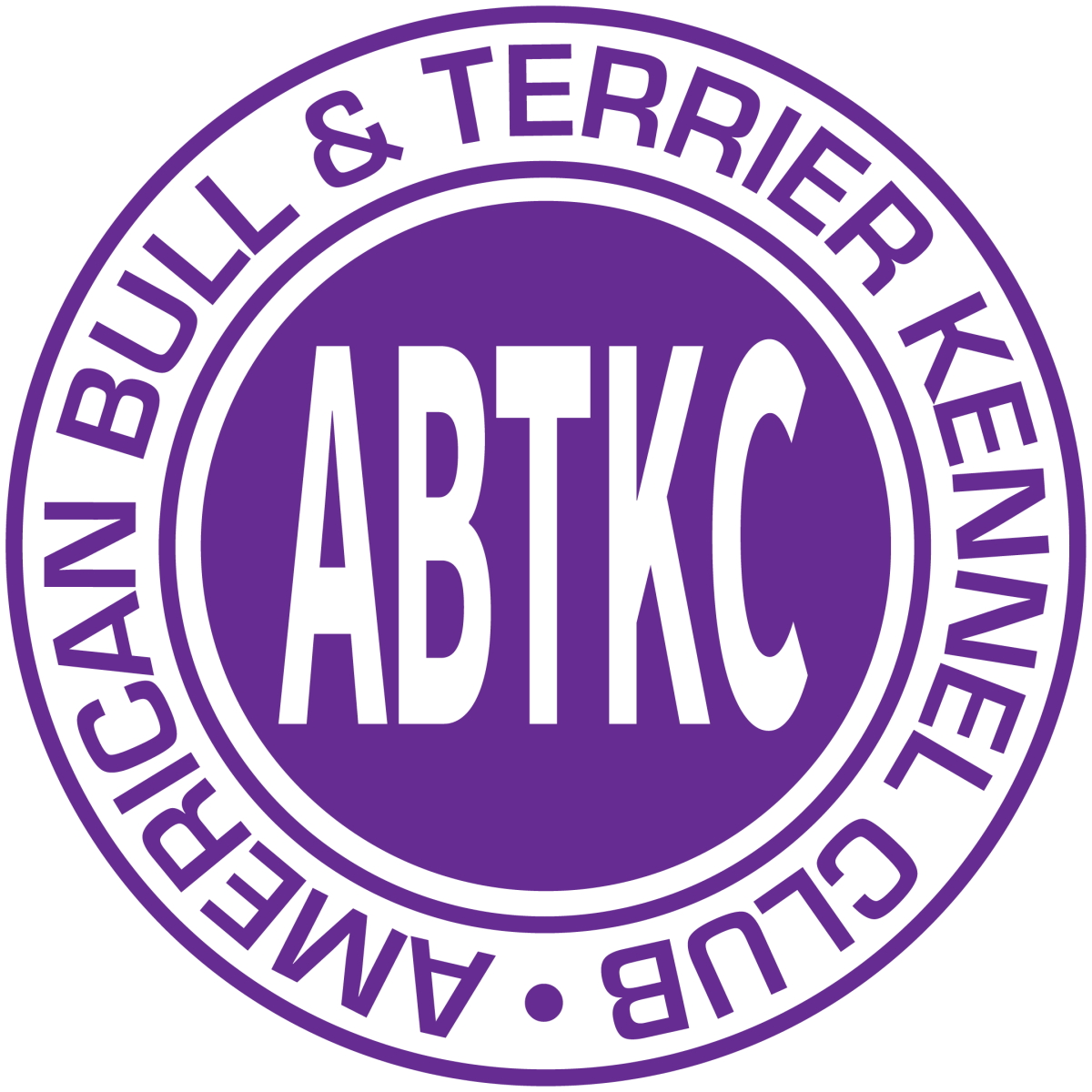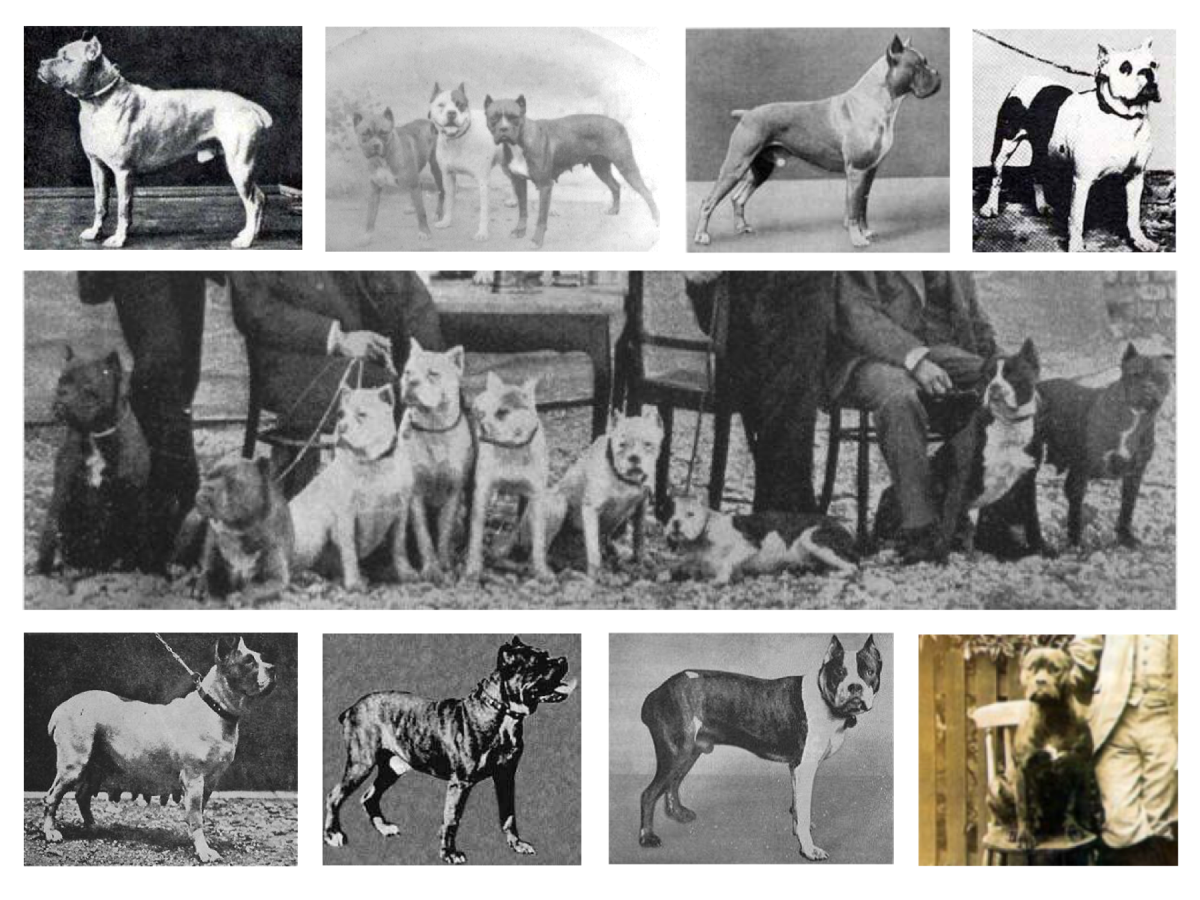Boxers are known for being wonderful family companions and guardians. Their unique look and color pattern make them easy to spot in a crowd. They are said to be great with children of all ages and always look forward to play time with the family. What many people do not know is that they also excel in guard, police, and military work. They have been used by the police and military in Germany since the early 1900s. Due to their size, strength, agility, and intelligence they have done well in these fields.

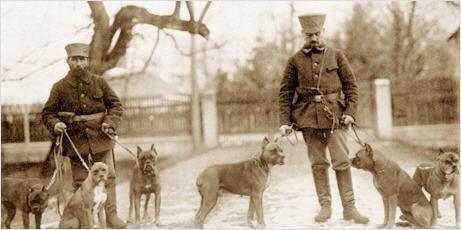
In the US and across the world, this breed has topped the charts in popularity for quite some time. Boxers ranked #14 on the AKC’s 2020 List of Most Popular Dog Breeds earlier this year. That number has now increased according to the latest information on their website; as they currently sit in the #11 spot this Fall. So they are steadily climbing back up the list and may even break into the top ten for 2021. They were only one of three breeds with Old English Bulldog heritage to make the AKC’s top 20 in 2020.
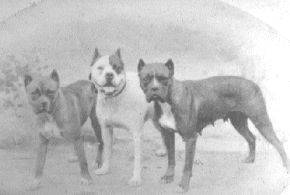
The history of this wonderful breed traces back to Germany over a century ago; where the first Boxers were produced by crossing the Old English Bulldog and the Bullenbeisser. Much like the Old English Bulldog, the Bullenbeisser’s name comes from its history in bullbaiting; as Bullenbeisser in German translates as “Bull-biter.” There are stories of other breeds being used in the creation of the Boxer; such as early English Bull Terriers and the Bull-and-Terrier. The Bull-and-Terrier is better known by two different breed names in modern times. In the United Kingdom the Bull-and-Terrier eventually became recognized as the Staffordshire Bull Terrier and in the United States as the American Pit Bull Terrier. Of course there are many other breeds that descend from Bull-and-Terrier stock, but we cover those in other articles. So for the sake of simplicity we will just mention the two above.
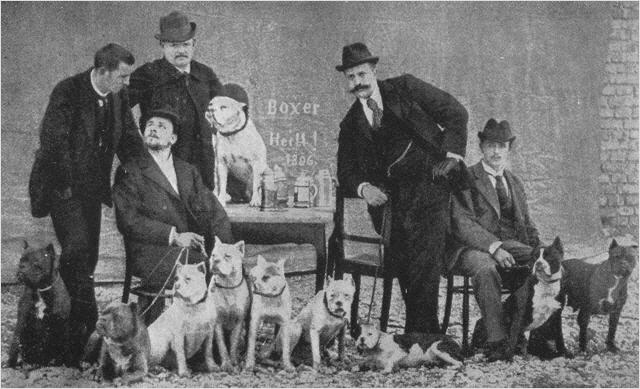
In the early pictures of the very first Boxers, some closely resemble paintings of Old English Bulldogs and others look more like shorter-nosed Mastiffs. Some of the early pictures of American Pit Bull Terriers in the late 1800s and early 1900s did have a similar look to some of longer-nosed Boxers. Probably not enough similarities though to draw any real conclusions, but it is an interesting topic. The resemblance that some share is likely due to Boxers and American Pit Bull Terriers both having heavy Old English Bulldog blood in their lines.

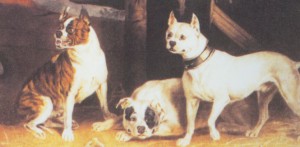
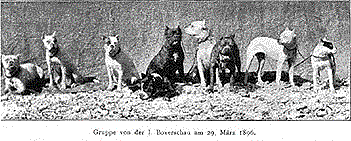
So if Bull-and-Terrier blood were introduced into the bloodlines, it could have happened at two different points in history. The first possibility would be in the creation of the Brabanter Bullenbeisser in an effort to reduce the size of the original Bullenbeisser. The second possibility would be at a later date in the creation of the Boxer breed; probably from lines outside of George Alt’s because there are a fair amount of unknowns in other early breeders lines. In the case of the Brabanter Bullenbeisser, it is more likely that the size of their Bullenbeisser was reduced by using Old English Bulldog blood. Since Old English Bulldogs were already known to excel in bullbaiting as well, they would have made a logical choice. It is unlikely that any substantial Bull-and-Terrier blood would have been introduced by the founders of the Boxer breed like George Alt; as most of the dogs used are well documented as Bullenbeisser or Old English Bulldogs. We even have pictures of many of the original dogs used in Alt’s early breeding program. That being said it is difficult to say what each breeder may have used in their breeding program and any of these rumors are possible.
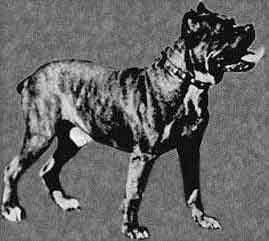
There is one dog in the earliest of Alt’s pedigrees that was of an undocumented breed. Since George’s original goal was to recreate the Bullenbeisser, we can assume that it had that general look. So the unknown dog was likely a Brabanter Bullenbeisser, Old English Bulldog, or some type of dog that had the general overall look of a shorter-nosed Mastiff that he was trying to acheive. So even though there are other breeds rumored to be used, we do not know of any concrete evidence to support this theory or to disprove it. The best we can do is look at what writers say about the early founders and their dogs. This is why many historians agree that the Boxer was created in Germany using only the Bullenbeisser and Old English Bulldog.

Since the Bullenbeissers in the late 1800s were nearly extinct, they had to use another dog to help revive the breed. The Old English Bulldog must have been their next closest option in breed type. It is believed that the Bullenbeisser that George imported from France was a Brabanter Bullenbeisser. The Bullenbeisser in Brabant was bred smaller for performance and was probably similar in size to the Old English Bulldog of that time period. Due to both breeds being bred for the same purpose, it would make sense that they were roughly the same weight and build. Although “smaller” in this case would still be a medium to large sized dog. The Bulldogs of that that era have been estimated to weigh between 60-90lbs depending on the line they came from.
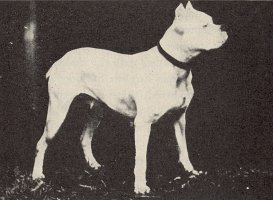
According to expert John Wagner, the Bullenbeisser of Brabant was nearly indistinguishable from the Old English Bulldog in the late 1800s; other than the presence of white coloring associated heavily with Bulldogs. Wagner was the author of The Boxer in 1939. Based on what Wagner states, there was a huge influx of Old English Bulldogs being imported from England to mainland Europe. So the similarities in appearance could have been due to this rumored interbreeding of the original Bullenbeisser and the Old English Bulldog. This may have happened due to them having a similar breeding goal; both were being bred mostly for bullbaiting at the time. Just like now, people then wanted to breed the best dogs with the best in order to achieve their desired goal. There are still some who believe that the reduction in size of the Bullenbeisser was accomplished through selective breeding without Bulldog blood, but this is probably unlikely. So the Brabanter Bullenbeisser was probably at the very least partially or largely influenced by Old English Bulldog blood.


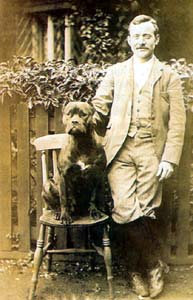
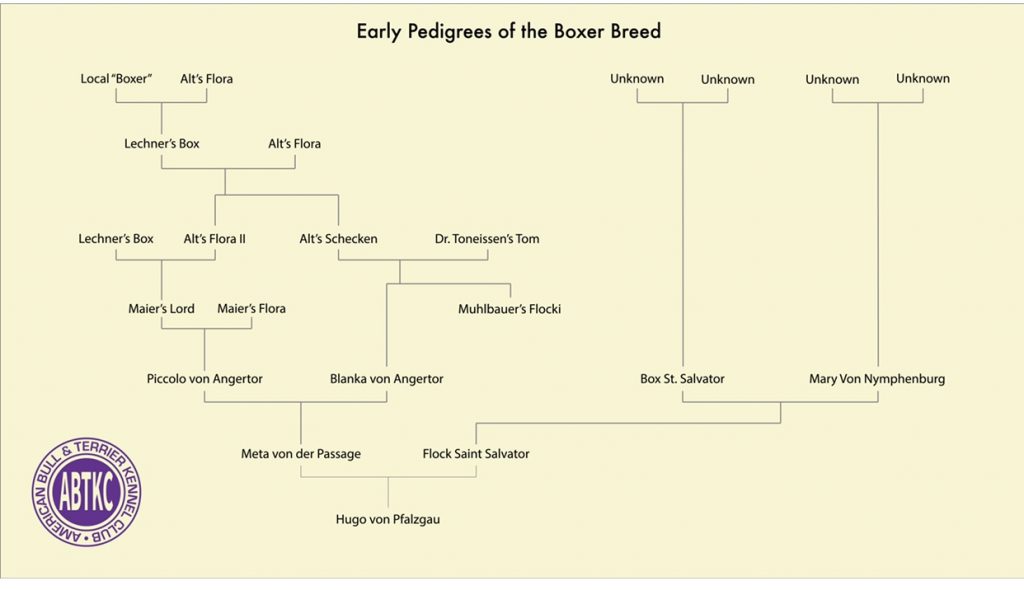
The Boxer Club in Germany was created in 1895 by Friedrich Roberts, Herald Konig, and Rudolph Hopner. The very first Boxer registered in the stud books was a dog named Muhlbauer’s Flocki; a dog that was produced by George Alt and his breeding program. The first Boxer exhibition at a dog show took place in 1896. Here, early examples of this new breed were put on display. We have created a diagram above to help explain the pedigrees of some of the early Boxers like Flocki, Meta, Piccolo, and Blanka. These dogs all descend from George Alt’s original breeding program; and went on to create other dogs that played a large part in the creation of this breed.

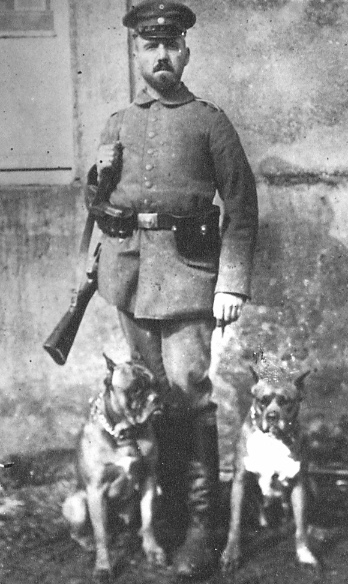
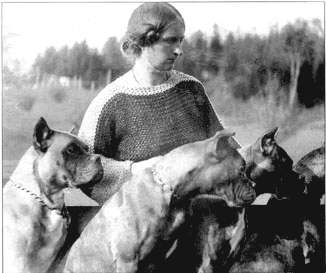
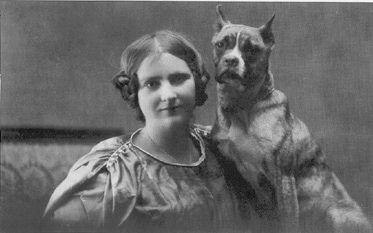

Philip and Friederun Stockmann were very influential Boxer breeders in Germany in the early 1900s. Their founding sire Rolf von Vogelsberg played a major role in the lines of American Boxers. The great-great grandson of Rolf was a dog named Sigurd von Dom. Sigurd won a lot of shows in Germany and was highly ranked in the show circuit. He was eventually sold to Barmere Kennels in Van Nuys, California where he started his American Legacy. Sigurd and three of his grandsons Lustig, Utz, and Dorian were deemed the “Four Horsemen of Boxerdom” in America by Milo Denlinger; author of the Complete Boxer. These four dogs are said to have made the biggest impact on the Boxer breed in the United States.
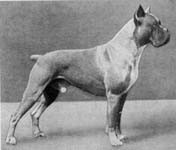
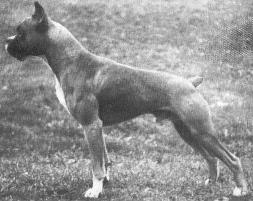

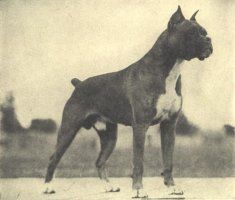
The original Bullenbeisers in Germany were of the larger Mastiff-type. They were strong dogs that were used for protecting livestock and property. They were also used for hunting to help bring down large game such as: wild boar, deer, and bears. Many believe that the Bärenbeisser (bear-biter) breed and the Bullenbeisser were one and the same; because the Bullenbeisser also had a known history of bear hunting. They could catch big game and hold them there until the hunters caught up.
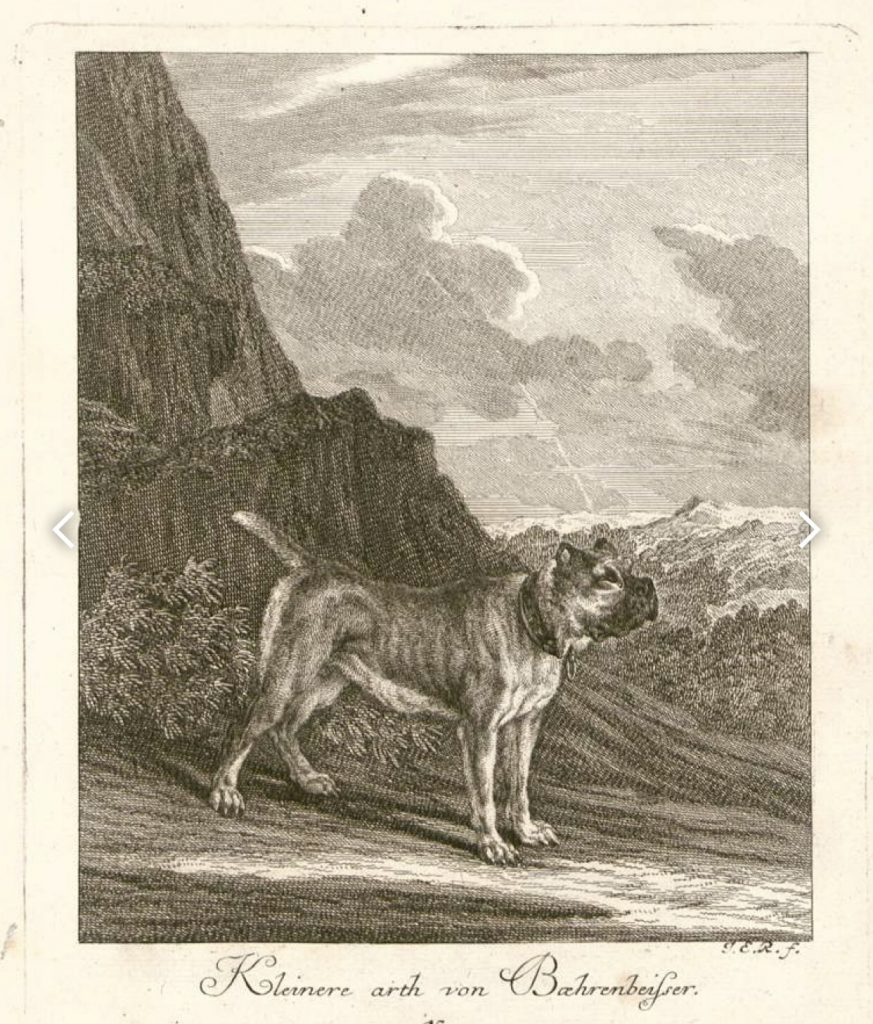
Eventually the Bullenbeisser evolved, as breeds do and ended up being divided into two main categories; the Danziger Bullenbeisser and the Brabanter Bullenbeisser. The Danziger Bullenbeisser was a larger dog reminiscent of the original. The Brabanter Bullenbeisser was a smaller version bred in the Brabant region of modern-day Belgium and the Netherlands. These two versions probably went extinct in the late 1800s; as there are no known photographs of them in the 1900s. Both are believed to descend from the original large mastiffs brought to Germany by the Romans.

The true history of the Bullenbeisser like other early dog breeds is surrounded by a certain level of mystery. All we know for certain, is that it was a mastiff-type dog brought to Germany centuries ago. It is said to have been brought there by the Romans and that their descendants became the original Bullenbeissers and Barenbeissers of Germany. The term mastiff is generally used to describe any large and powerful dog in Europe that has a broad muzzle. These dogs were used across Europe in battle and for protection around the estate. The origin of the Roman mastiffs is not fully understood, but there are many theories.
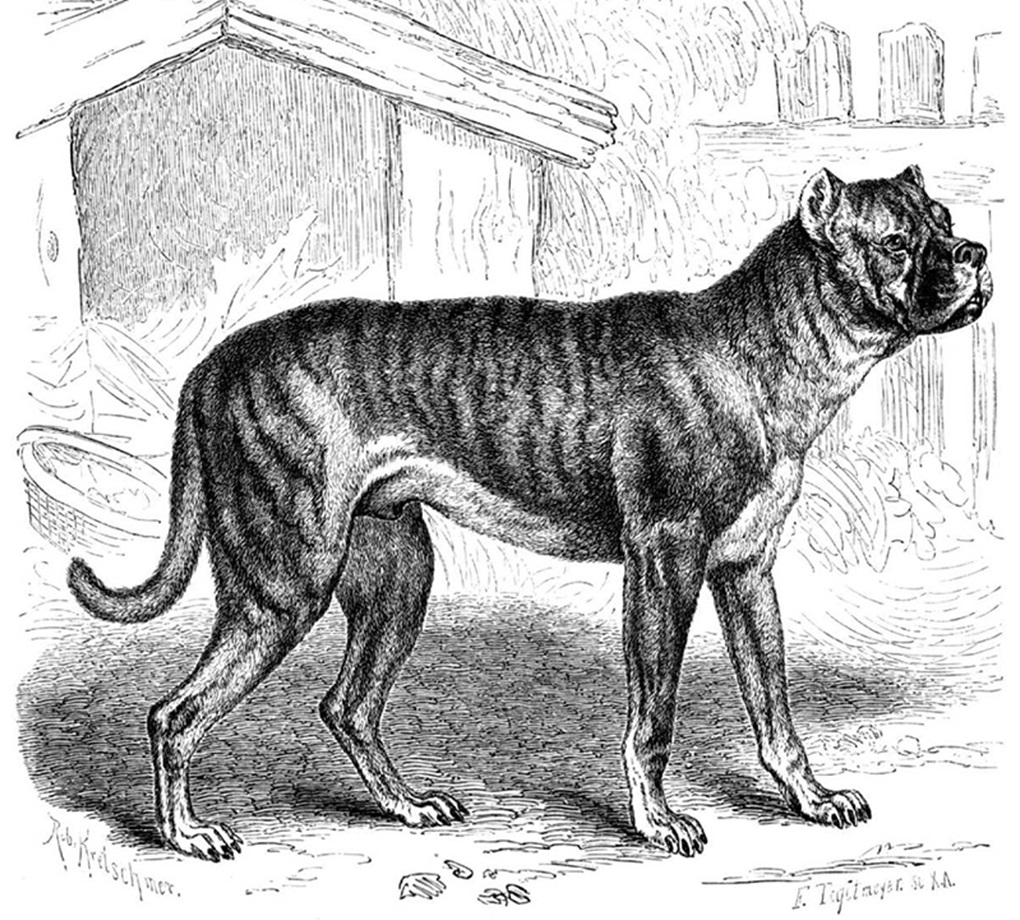
There are three major beliefs about the history of the Roman mastiffs. Some historians believe that the Roman mastiffs came from the Molossus or Molossian dogs. Molosser is a name used to describe breeds that are believed to have come from the Molussus. This ancient dog came from Epirus; a region now shared by modern-day Greece and Albania. The Molossians were one of a few Greek tribes to settle in that region. They were known for having some exceptionally brave and powerful dogs. It is said that the dogs of that region were influenced partially or entirely by the dogs of the Alani people (Alans); brought with them on their way through Europe. These people believe that the Molossian dogs (also referred to as the Molossus) were the ones used to create all of the Mastiff-type breeds of Europe; and that the Molosser was created by mixing the Alaunt with local breeds in Epirus.
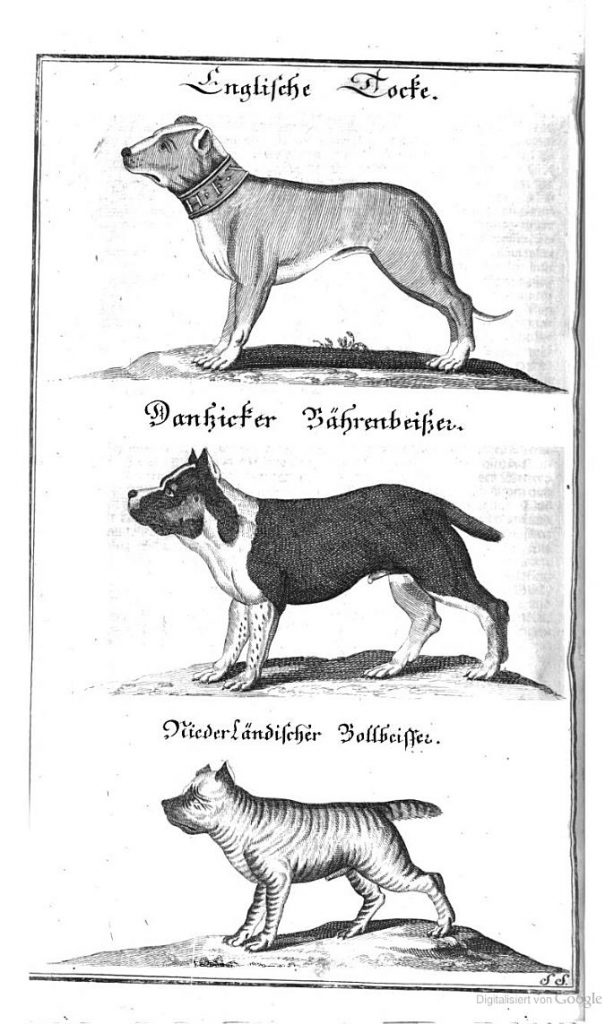
There are also those who believe that the Alaunt was used to create all of the Mastiff-type and Bulldog-type breeds of Europe. They believe that this was accomplished as a result of selective breeding of the Alaunt or by mixing it with local dogs of each region to create these breeds. The Alani dogs became known across Europe as the Alaunt; like the Alaunt de Boucherie of France (A predecessor of the Dogue de Bordeaux) or the Alano Español (Spanish Alaunt). Of course the people that named these breeds must have believed that their mastiffs descended primarily or entirely from the Alaunt. The Alaunt was highly regarded for its courage and tenacity.
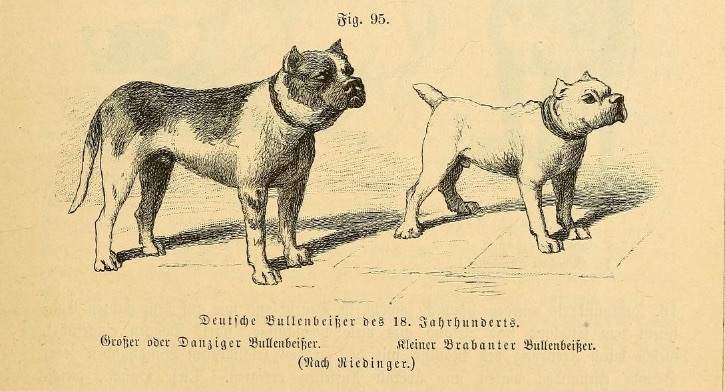
There are also those who believe that both the Molossus and the Pugnace Britanniae of Great Britain descend directly from the Alaunt, possibly by mixing it with local breeds or of pure Alaunt stock, and that both of these breeds were used to create the Roman Mastiffs. The Romans were impressed by the dogs they found on the conquests through the British Isles. So it is documented in history that they decided to bring Pugnace Britanniae back to Rome and may have used them as the basis for the Roman mastiffs; either by using strictly Pugnace Britanniae stock as their foundation or by mixing it with the Molossus. Whatever the real history is, what we do know is that the Molossian dogs (Molossus), the Alani dogs (Alaunts), and the British dogs (Pugnace Britanniae) were all renowned for their courage, their natural ability to guard, and as great allies in battle.

The truth is probably a healthy blend of all of these stories combined. Large mastiff-type dogs have been described in ancient literature and depicted in art from Europe to Asia. Mastiffs can be traced back to the Assyrian Empire in Nineveh in the 7th century BC (Modern-day Iraq) and all the way out in Punjab as early as the 4th century BC (Modern-day Pakistan and India). Their use as hunting dogs and guardians goes back almost 3,000 years and possibly more. For more in-depth information on Mastiff history, follow our upcoming article on Mastiff history. Mastiff-type dogs of antiquity have played a crucial role in the development of many breeds including the Boxer.
